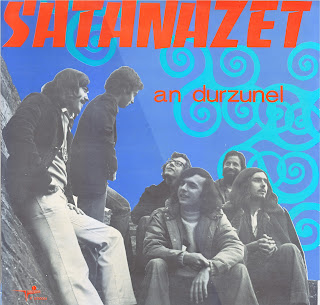FLÛTES ORIENTALES SACREES
DES DERVICHES TOURNEURS
enregistré en Turquie
SACRED ORIENTAL FLUTES OF
THE WHIRLING DERVISHES
recorded in Turkey
Vogue, 1970, CLVLX 542
I suppose that each of you was struck/fascinated by some records in his/her youth. This album is one of them. I think I was twelve years old when I got this record as a present.
Recorded in Turkey by Jean-Claude Chabrier with the help of Turkish musicologist Rusen Ferid Kam these recordings were like listening to something from another era. At the time sufi music or rituals were not at the forefront of world music. The text by Chabrier is in French and gives some basic information about Turkish sufism which was useful nevertheless back then. In 1979 he published some fascinating (again) albums in a series called ''Arabesques'' (see my posts) with plenty of information about maqams analysing what the musicians played on discs. Here we don't know about modes and other specificities.
One of the interest of this album is the presence of two great masters : one of the greatest neyzenler Hayri Tümer and vocalist Münir Nurettin Selçuk. Tümer plays four pieces one tekbir and three improvisations. Selçuk sings on his own on track A4 the ''na't'' in Persian and leads the ceremony on track B1 with the neys, the percussion and choir. There is also a short "ezzan'' (Turkish prononciation of the Arabic ''adhan'') and a pesrev led by H. Tümer. According to some connoisseurs Tümer is quite forgotten nowadays. He was recorded solo by Chabrier in the series I mentionned above. I shall post it.
My copy being not in the best shape due to frequent listening, I used the sound of another source found on archive.org. The original sound recording is not great with some distorsion in ensemble playing but all solos are just gripping.
download.wav




































